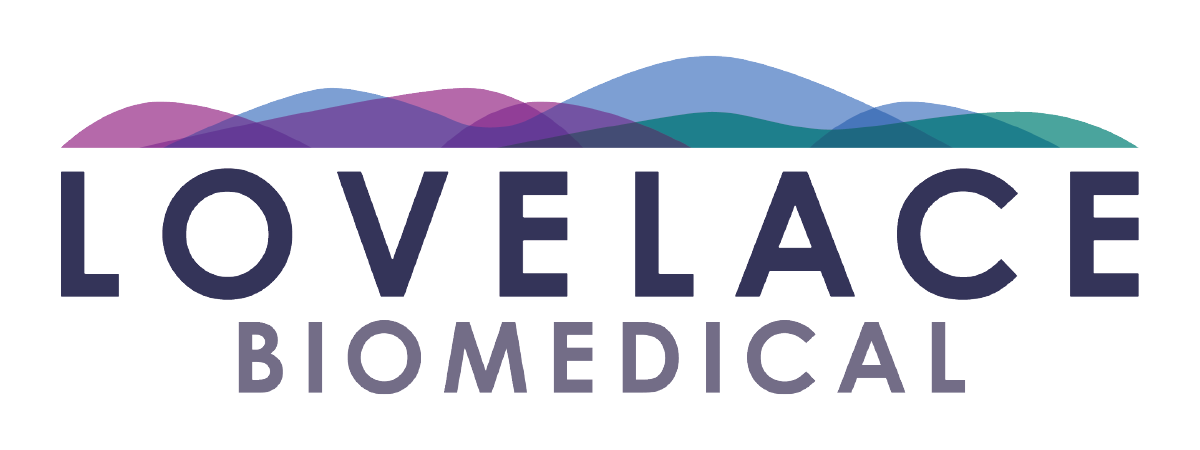Hammad has 18 years experience, and focuses on our aerosol development and delivery for novel therapies.
Hammad, tell me what you do as an aerosol scientist at Lovelace.
Overall, my work leverages Lovelace’s broad capabilities in aerosol science to answer important questions that improve public health and regulations. The work is exciting because we are able to work at the cutting edge with innovators across many disciplines. I feel that the valuable collaborations we provide to our colleagues at the companies we work with really make a difference to help advance their technology.
Over the past year, much of my work has been focused on the use of our capabilities to develop new therapies for pulmonary infections such as SARS-Cov-2, identify novel means to deliver medications, especially gene therapy, to treat diseases such as cystic fibrosis. I also do a lot of work to help understand the health consequences of alternative tobacco products such as electronic cigarettes.
What is your background? How do you use it in aerosolized medicine?
My background is in mechanical engineering. The first branch of engineering is fluid mechanics, and its sub-branch, aerosol mechanics, applies to nearly everything I do at Lovelace as an aerosol scientist. Fluid mechanics deals with the transport mechanisms of particles which mimics aerosolized drug delivery. My background in mechanical engineering allows me to take, and merge an understanding of engineering and previous drug delivery to new products (gene therapy, antivirals, etc.) that are emerging in the field of respiratory medicine.
Lovelace is known as the experts in taking the products in liquid form, and aerosolize it for use in delivery in preclinical studies. As new materials are being developed, methods to characterize these atmospheres must also be developed. This has provided exciting new projects over the past 12 – 18 months.
Hammad, the aerosols you talked about seem really complex. Can you speak about some of the recent problem statements you have had and how you have addressed them?
In the past, using classical aerosol mechanics, we have used small molecules for delivery to the lungs. In these cases, there was less of a focus on the loss of viability or damage to the compound. The collection and analysis techniques were much more straight forward. This is contrasted by some of the novel program I am working on. These programs include gene therapy, where we have been developing these methods as fit for purpose for each aerosol.
Delivering gene therapy products to the respiratory tract creates many challenges that we have been working hard with our collaborators to address. First, the materials are very expensive. It is important to develop and implement approaches to minimize the amount of material required to evaluate its safety and efficacy when designing systems. Second, the materials can be sensitive to degradation. Because of this, our techniques that we use to characterize the aerosol must consider an assessment of integrity/activity. Further, our classical techniques that we have used to assess concentration of molecules does not work due to degradation during sample collection. We have had to develop novel techniques for the delivery of material, collection, and determination of performance through aerosol, chemistry, and pharmacodynamic readouts.
Along with characterization the implications of costs of goods has evolved with novel therapies. Therefore, more focus has been on novel approaches for delivery. These include direct delivery and breath coordinated delivery systems. This increases inhalation delivery efficiency and reduces cost of goods for a program.
Hammad, these are exciting topics. What do you see as some of most important outcomes that Lovelace will be able contribute to over the next several years?
Well, I hope that everything we work on helps to advance new therapies or inform new regulations. Obviously, the past year the topic has been Sars-CoV-2. We worked on a number of novel inhaled therapies for this disease, and many that are delivered by other means. I am proud to note that some of these therapies have already gone through clinical trials and are being considered for approval. Because the typical drug approval process takes time, the shortened timeline for approval of SARS-CoV-2 medications has been gratifying because we can see the fruits of our labor in a more rapid timeline. In addition to the therapies, we developed novel ways to study the virus. The studies are conducted in our ABSL-3 facility to infect animals via transmission aerosol. This work has been guided based on Lovelace’s previous experience in infectious diseases (anthrax, tularemia, and other viruses).
These innovations and my contributions to the state of the art in aerosol sciences continue to support Lovelace now as a leader in respiratory drug delivery, and will be used to build upon for years to come.
Follow us!

